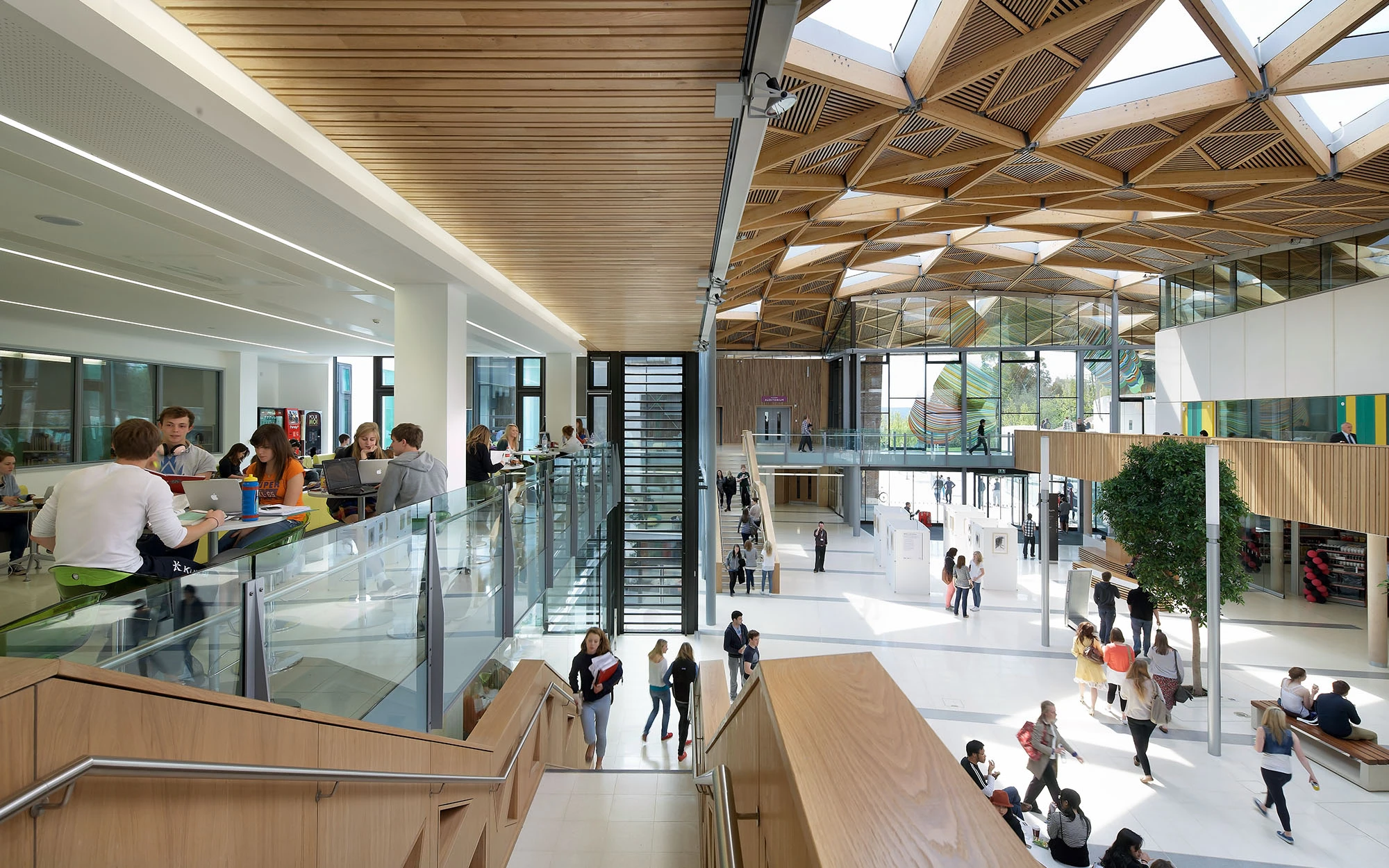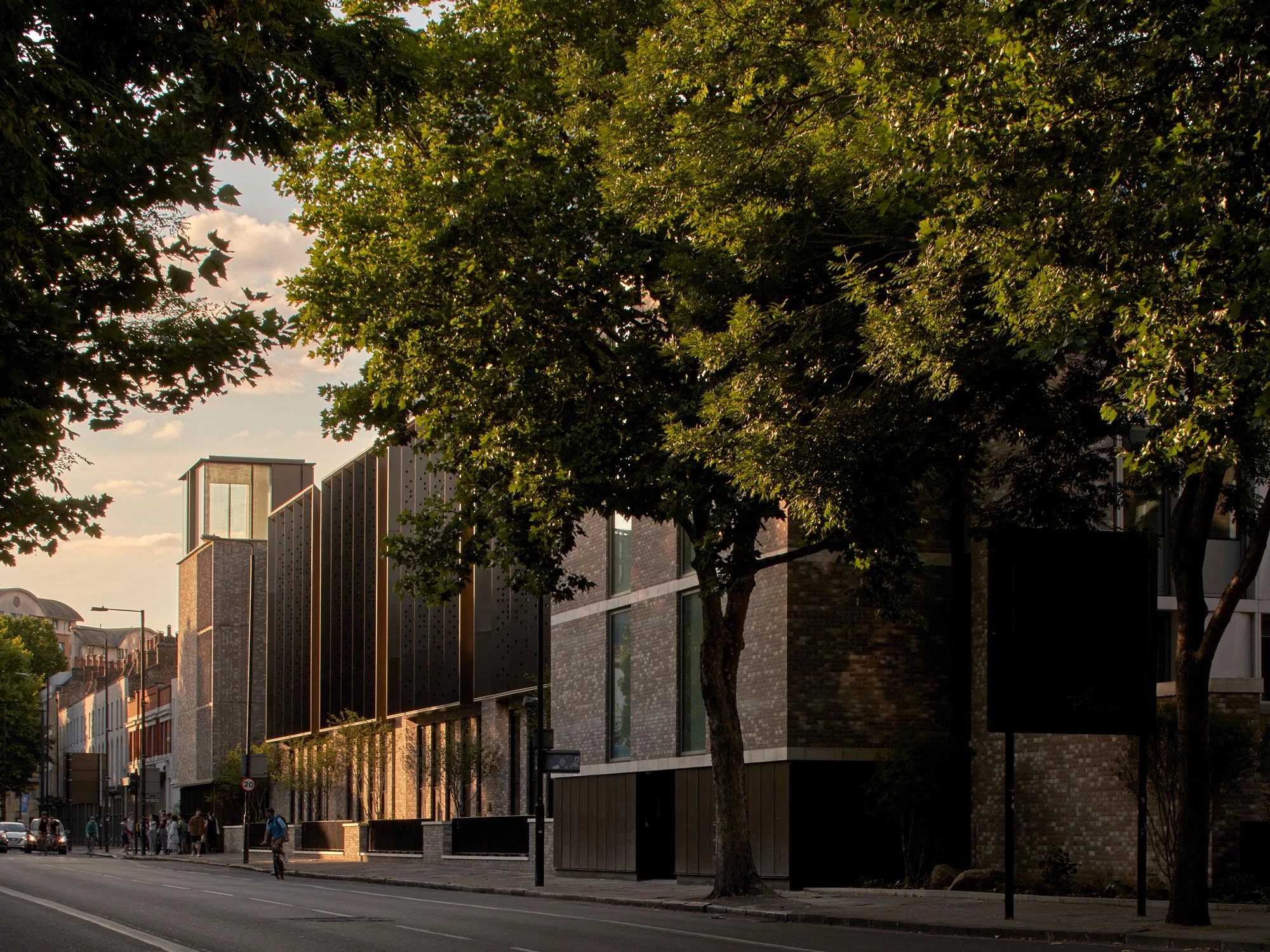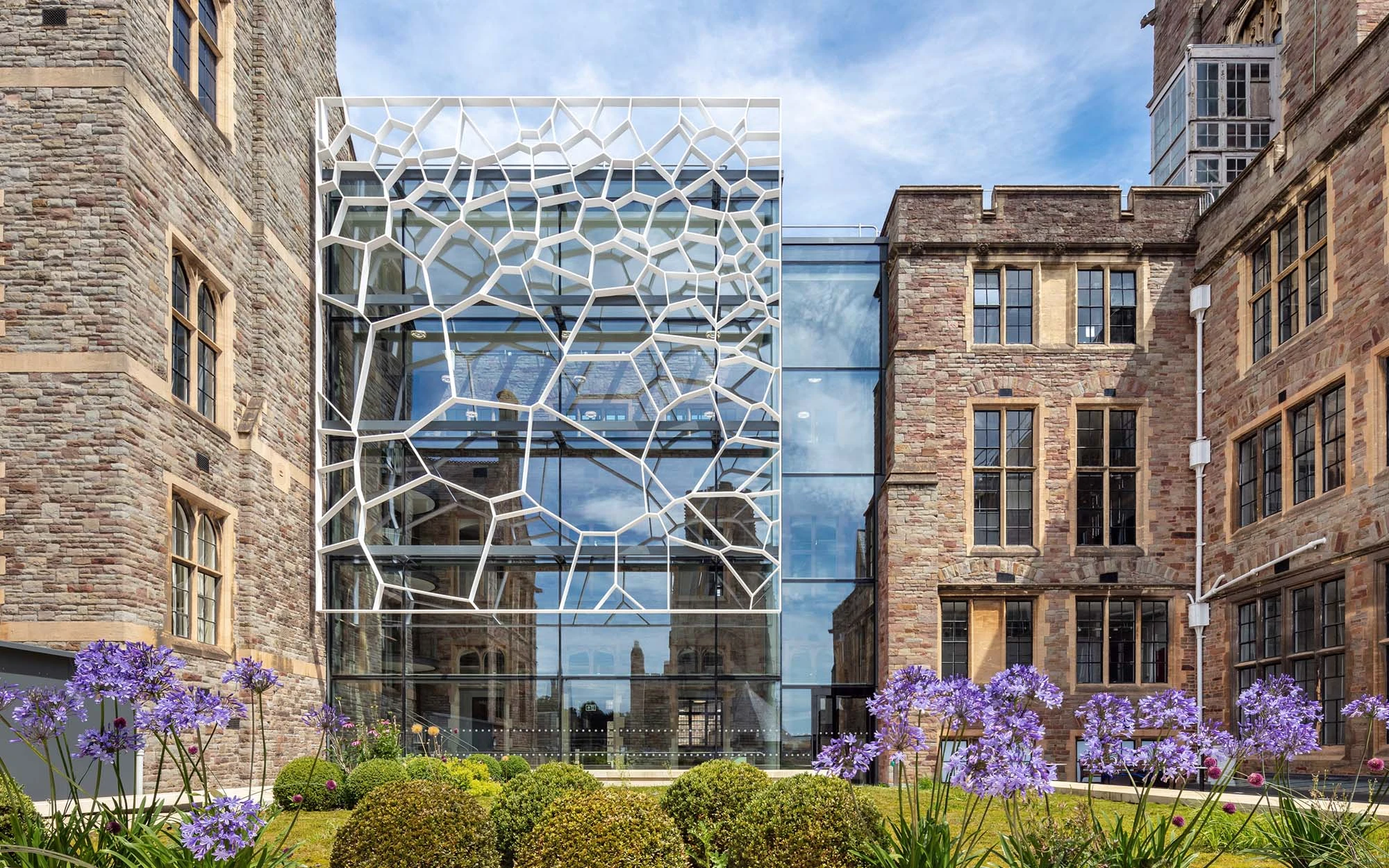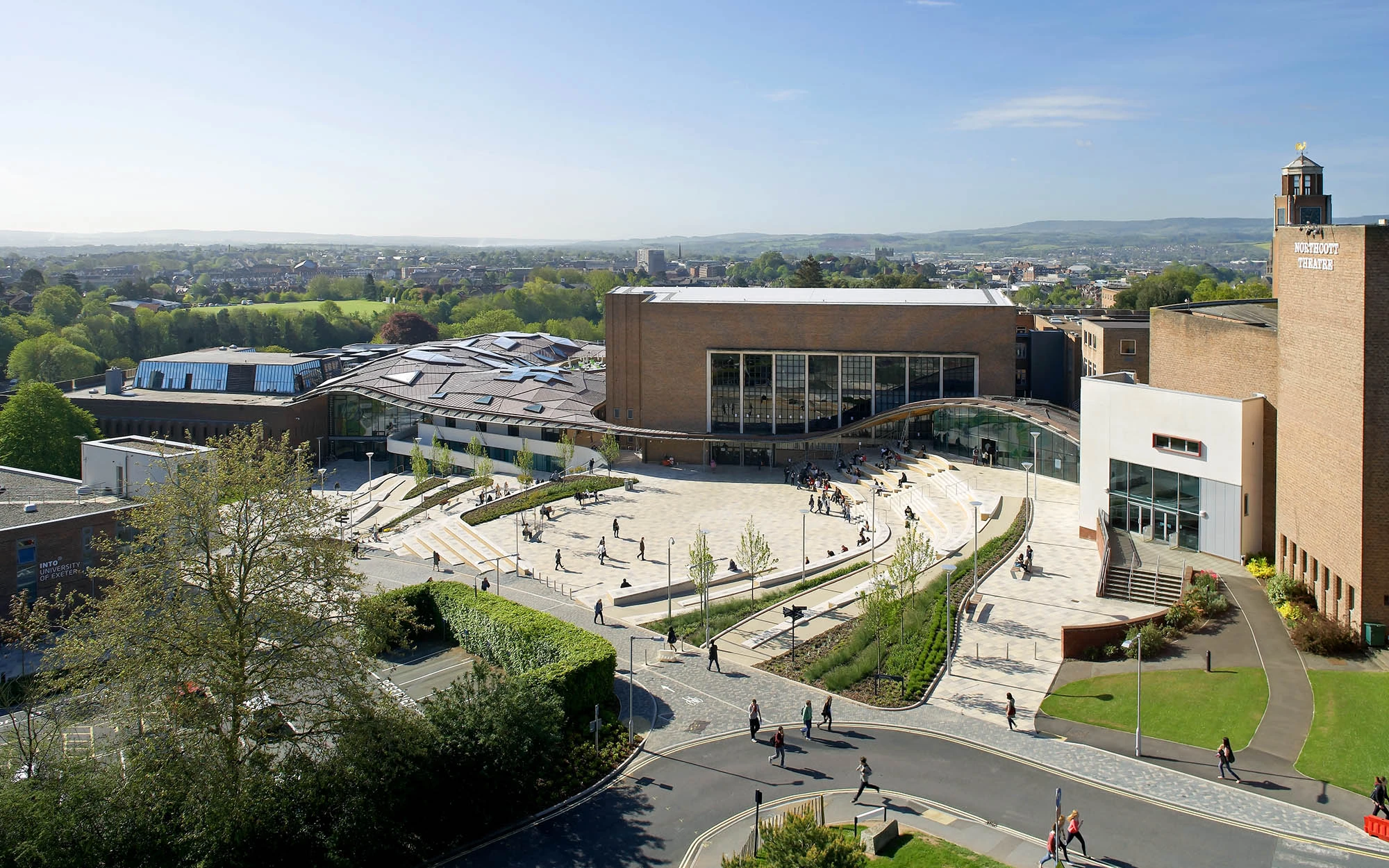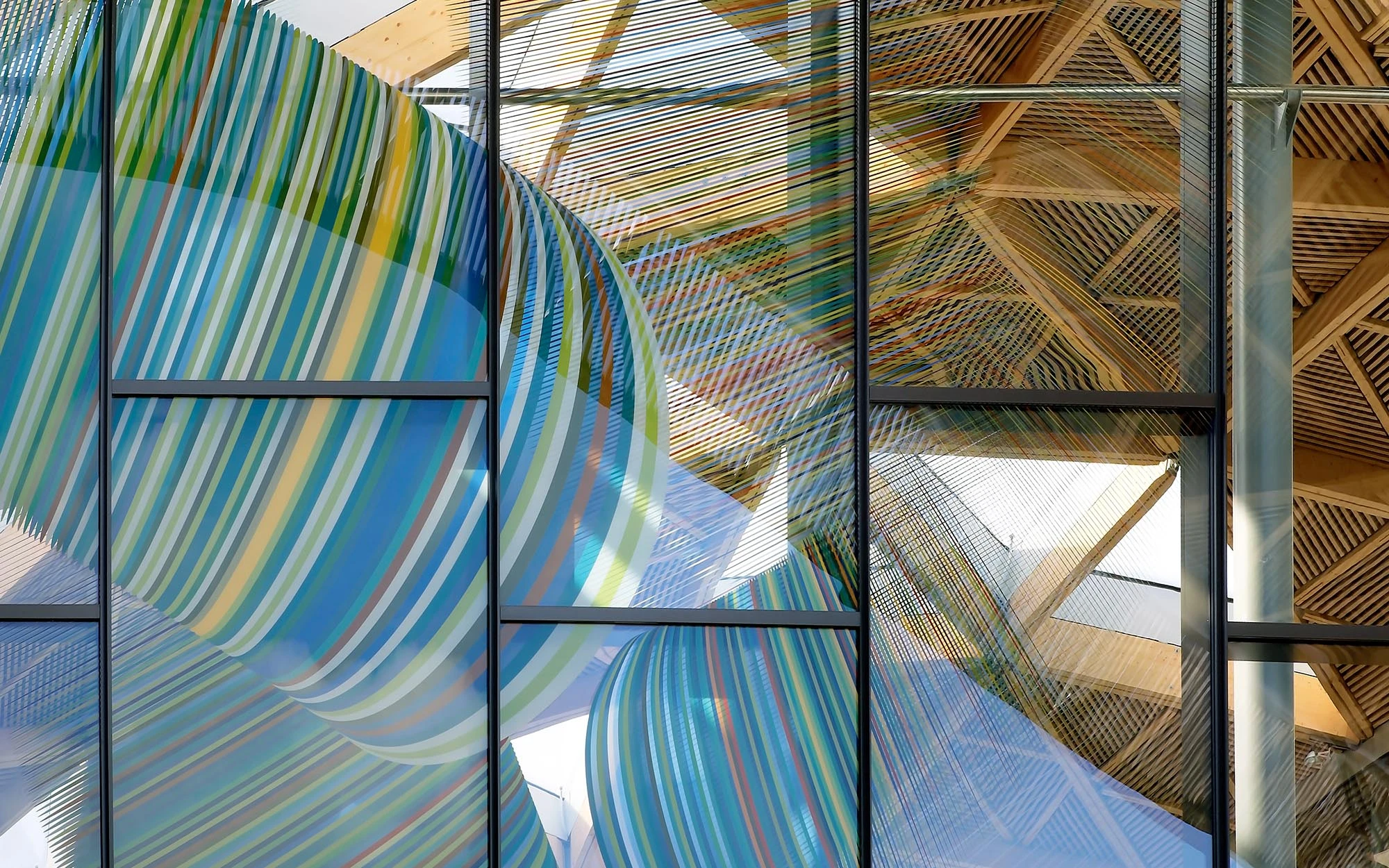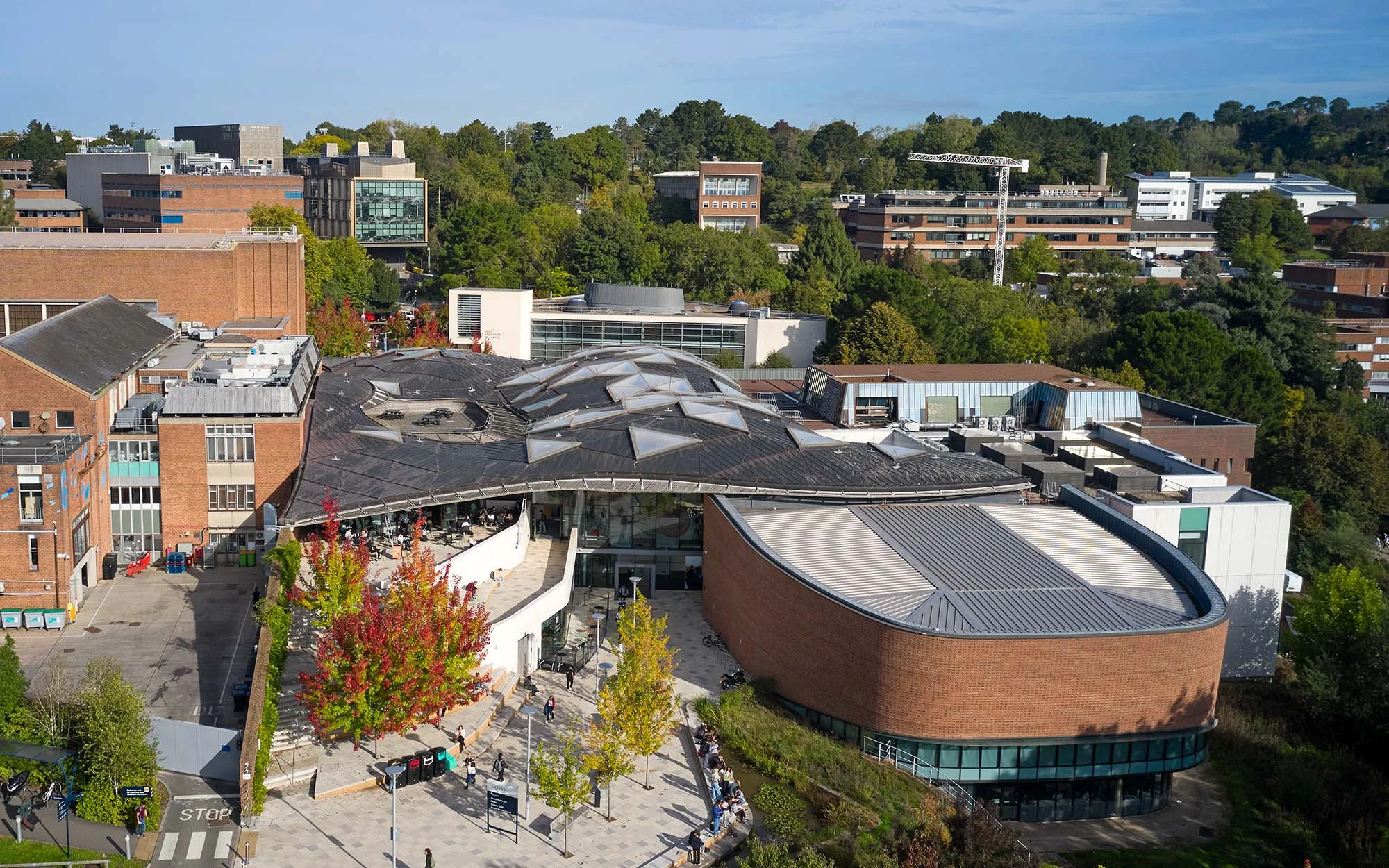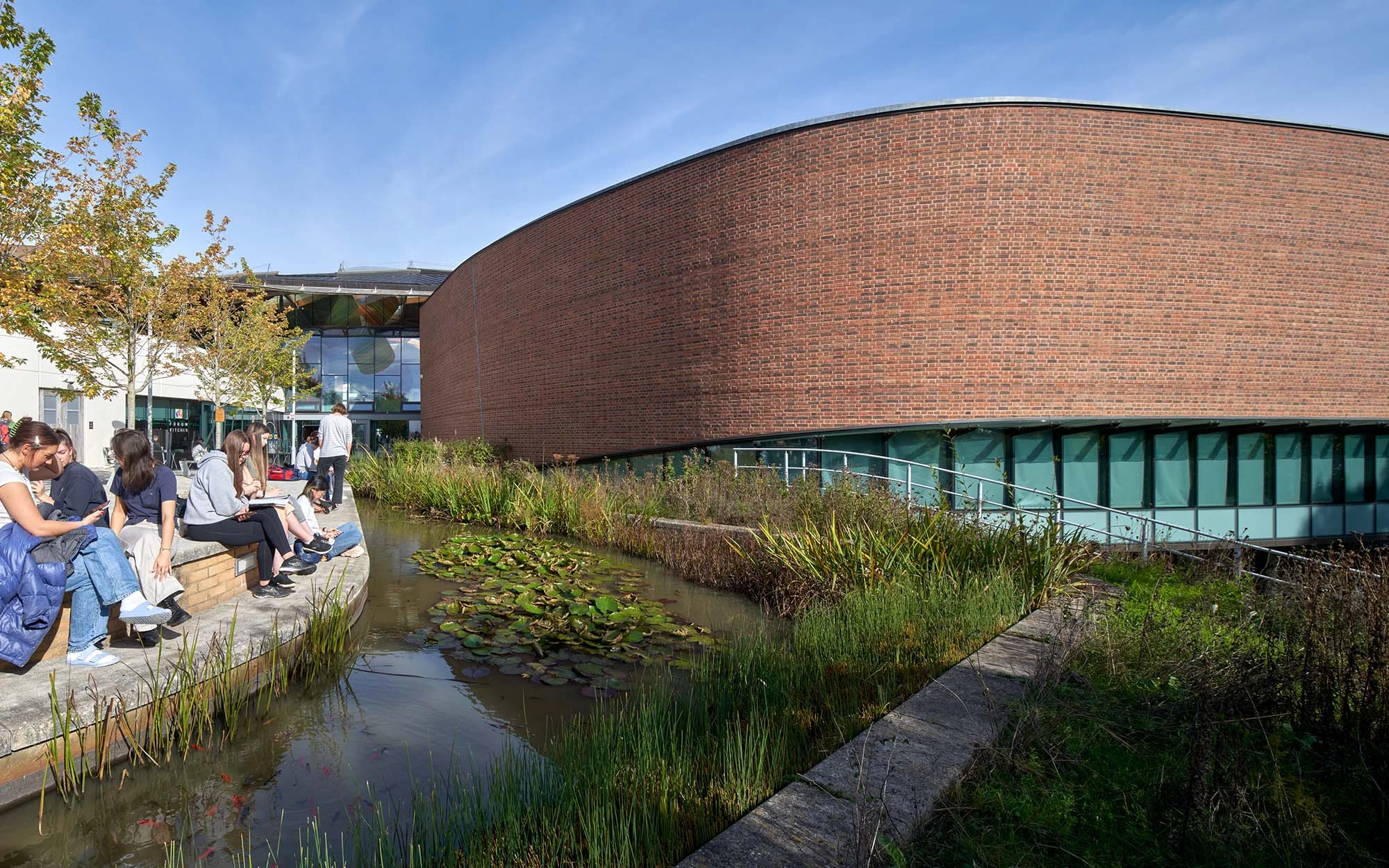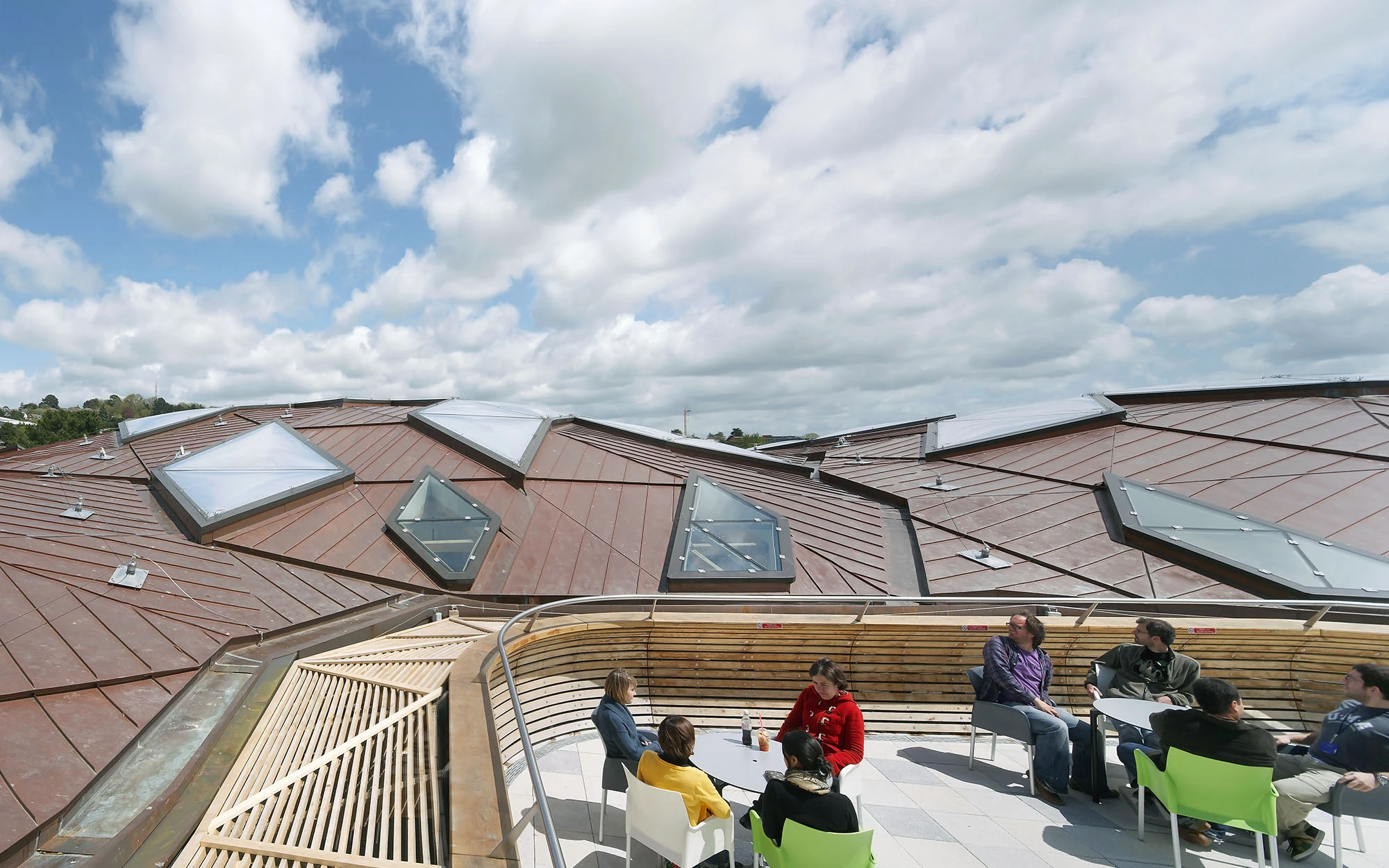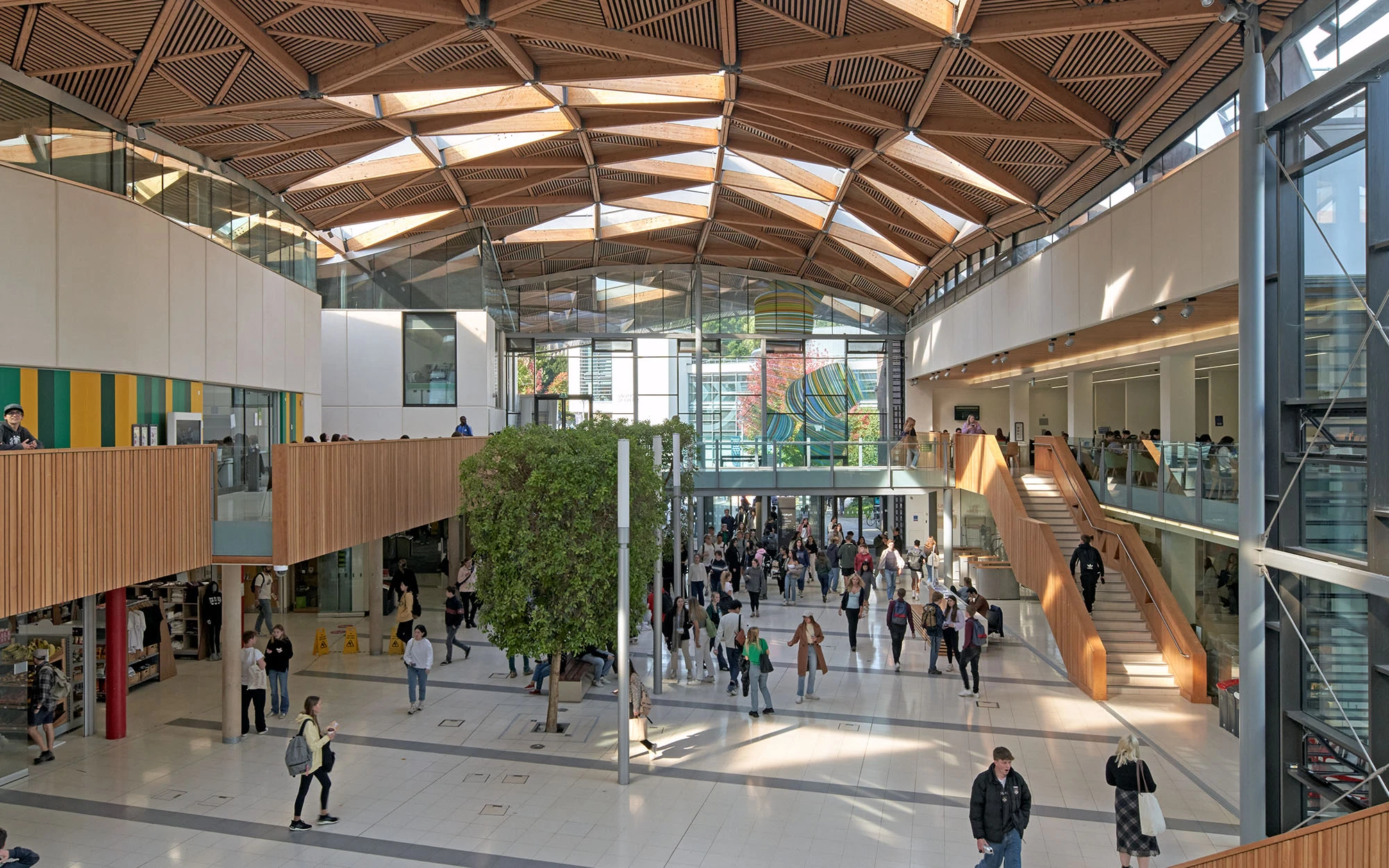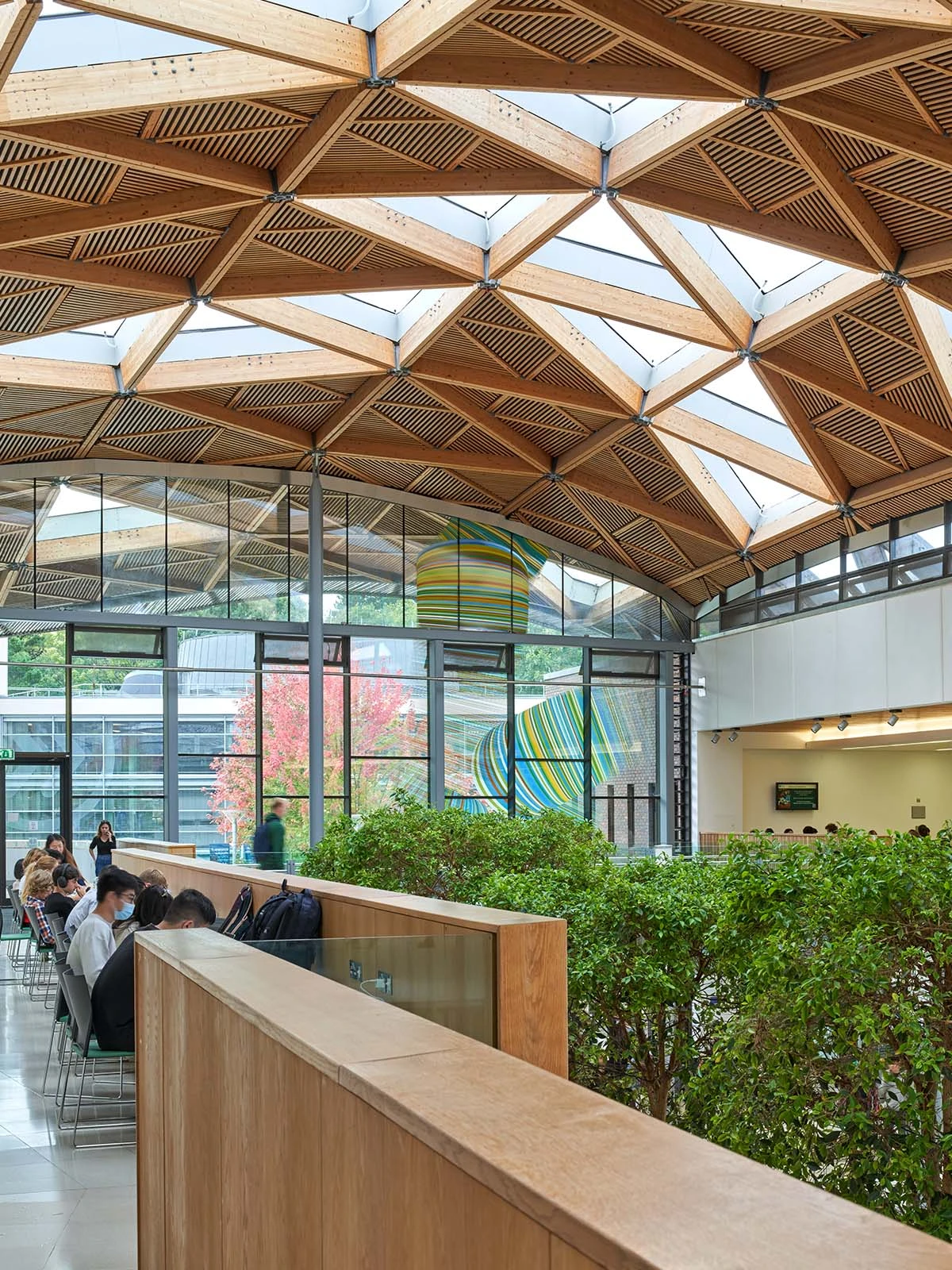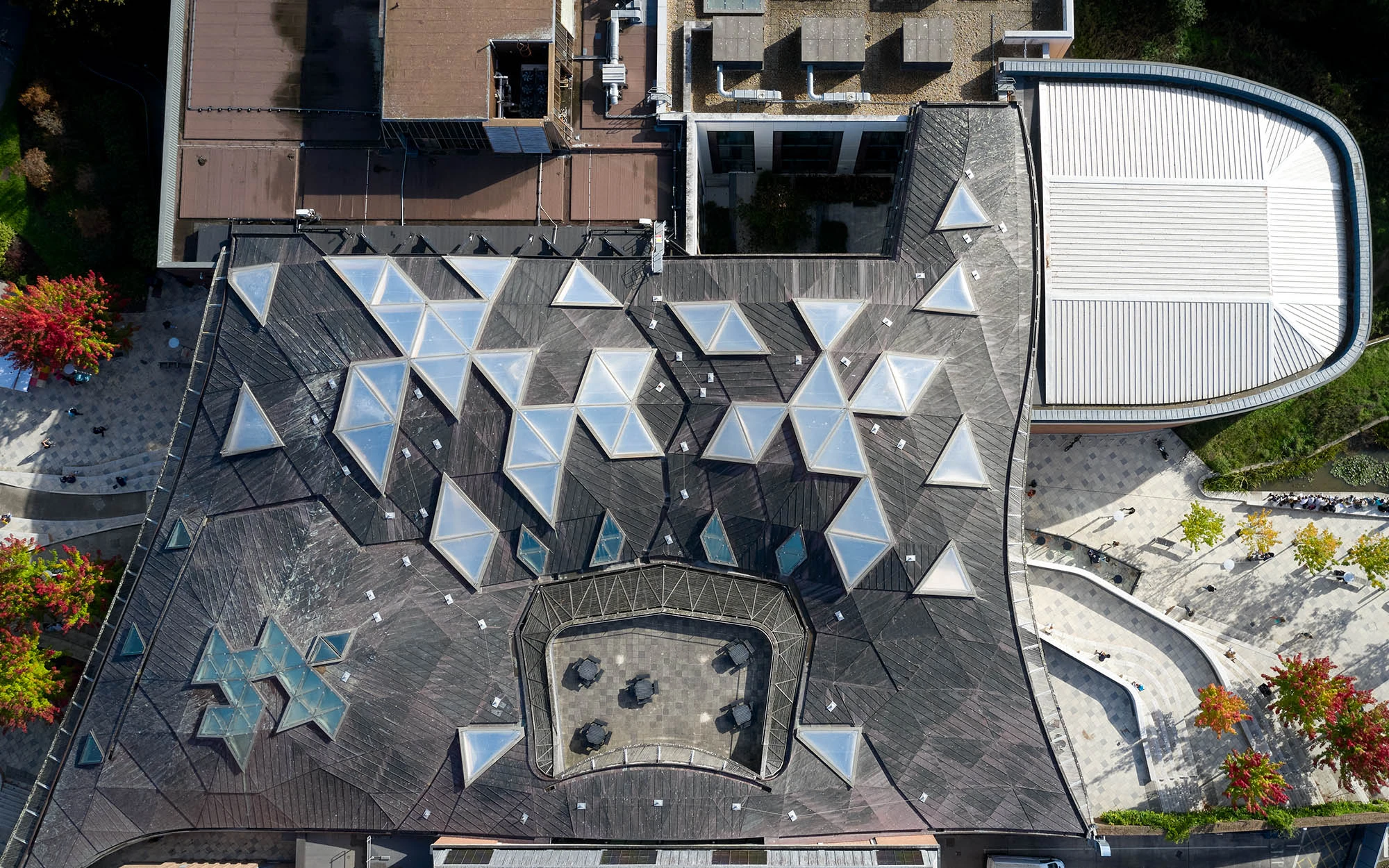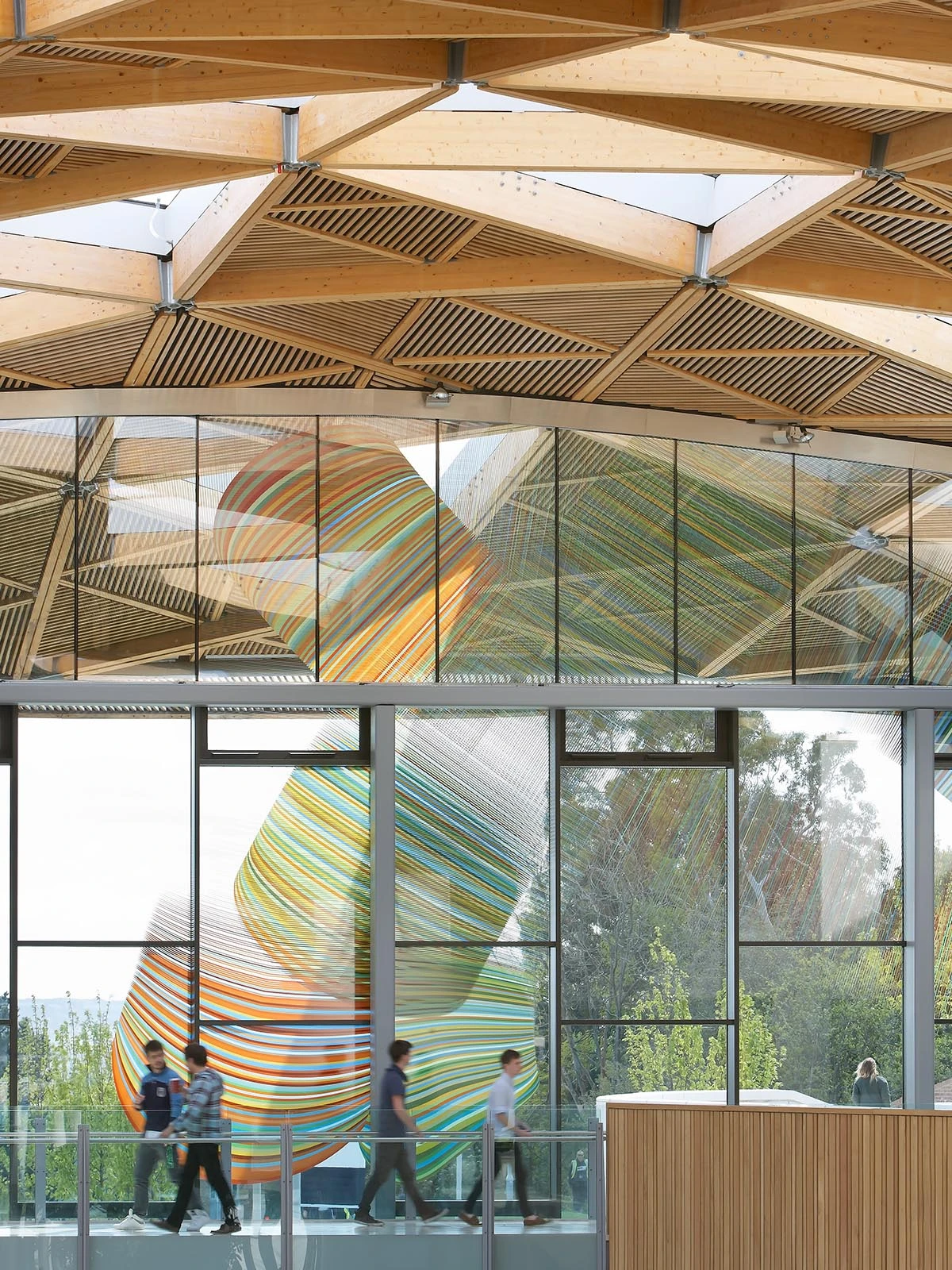
Stafford Critchlow, project director for Exeter Forum, explains how we revisited this landmark university project ten years after it opened, supporting an independent post-occupancy study evalating energy performance, durability, and (most importantly) the user experience.
The brief for the Forum was developed in anticipation of the advent of student charging, a significant step change in the focus of Higher Education where students became not just recipients of education but consumers with choice in a competitive market. Built to coincide with the university’s ambition to join the Russell Group of leading universities, the project had the close attention of the senior management team at the University throughout, not least because construction - over two and half years in the very heart of the campus - had the potential to disrupt most of some people’s undergraduate degree. The fact that the new project was delivered with no dip in student survey results and opened on time by HM the Queen at the beginning of her Jubilee celebrations was a tribute to the whole team’s combined effort.
The brief was ambitious and based, in part, on an international study tour by the project sponsors of best practice in Australia and North America: of note were the prioritizing of student support facilities, open social study space around the library and research-led teaching spaces that could flex through the year to provide an expansion of library reading rooms for the summer term and conferencing over the summer.
The Streatham Hill Campus in Exeter is a hilly landscape on the edge of the city with rich and exotic planting, part of an arboretum, from its origins as the 19th century gardens of Reed Hall. From the 1950s to the 1980s new university buildings, predominantly brick and rectilinear, were spaced out around this landscape at different heights and all linked by roads with a large car park at the centre, next to the Great Hall. WilkinsonEyre's design solution for the Forum removed the car park and created a pedestrian-friendly heart to the campus, a green corridor that flows through the building and connects it with the wider landscape on either side. The undulating timber gridshell roof structure of the Forum with its copper covering – at 3,200m² the largest freeform timber gridshell in the UK -- flows organically between the brick volumes of the existing buildings and unites the whole at the same time providing a landmark facility in Higher Education that was instantly popular with students, staff and visitors alike.
The Forum linked essential facilities such as the Great Hall, library, lecture theatres and the Student Guild along a new galleried, indoor high-street, lined with cafes, a shop and a bank. A student services centre took a prominent position within the new building, broadening and enhancing the range and availability of pastoral services that the University offered. A newly built 400 seat auditorium, specially commissioned public art, landscaped open spaces and refurbished library made the Forum the heart of the social and academic life of the University.
Ten Year Findings
Intended to deliver a strong visual identity for the University in the face of a highly competitive higher education market that was increasingly international, the Forum was created as a sub-brand within the University and needed to both stimulate demand for the university’s undergraduate offer and accommodate the rising student numbers anticipated. Exeter was admitted to the prestigious Russell Group and the period since the Forum’s opening has involved extensive, significant change. There has been a great expansion of the University’s population -- student numbers having doubled -- coupled with its rise in the higher education league tables, for which the Forum was both envisaged and has since been considered to have been an enabler.
An independent review commissioned by the university in 2022 evaluated the success of the building from the perspective of key personnel representing the library service, estates, student guild and student information centre, digital hub, access, commercial operations, timetabling and security. The evaluation comprised 89 rateable evaluative questions, for which each of the interviewees was asked to select one of three rating levels. Most ratings were positive (57%), followed by “OK” (23%) and negative (20%). The building itself secured a 90% approval rating. In particular, the following statements met with an agreement rating of more than 90%
(The Forum) expresses the university’s vision, ambition, progressiveness and care
Is widely seen as a place rather than a route – described as a heart, hub, and centre offering cohesion
The Forum’s light, open, airy and spacious attributes predominate as descriptors of the space
Is an effective location for student take-up of the services offered
Has helped the University of Exeter realise its goal to be a leading UK university
Strengthens and enriches student experience with a range of provisions in one place
Has been a beacon of student provision to other higher institutions
Is significant in Exeter’s offer as a place for celebrations and events
Shifting study trends have changed the demand for different facilities.
Library provision in particular has changed; the librarians no longer buy books, but spend twice as much on digital material. They mainly consult online with students rather than in person. The library space is now being reconfigured to meet the rising demand for extra study space.
Huge growth of ubiquitous IT and remote connection has become central to students’ experience, with effects on study modes, teaching and service delivery. Covid has impacted both on appetite for in-person student experience and accelerating hybrid modes for students and academics. In common with other universities, Exeter struggles to accommodate choice in this area when students may opt to join lectures, seminars and tutorials in different ways at different times.
In line with the gradual movement of university education towards becoming a consumer product, there is a cultural change in expectations and requirements for campus experience and services, for instance in the decline in relevance of an on-site bank, and the increased importance of student wellbeing.
Sustainability
There is a rising concern amongst students about carbon emissions, energy usage and climate change, and the associated intensification of interest in sustainable building design and operation.
The Forum was designed to achieve a BREEAM “excellent” rating. While the sustainability credentials of the timber structure and copper cladding are apparent, other features such as natural stack ventilation, a labyrinth pipe air-cooling system and energy-efficient lighting maximise the environmental performance of the main building in use. The building was designed using SUDS principles, with water harvesting, greywater reticulation and new ponds and wetlands created to the south of the campus to assist in water attenuation. Low water-use fixtures were selected throughout the new project. Special care was taken during the design and construction process to preserve the valuable existing trees on site.
Expectations of air tightness and thermal performance would be more demanding today. In the external evaluation undertaken in Summer 2022 of the Forum’s performance over 10 years, the Forum rated over 85% in responses on the environmental experience concerning summer comfort, fresh air, humidity, ambient light on both bright and dull days, and a positive appreciation of the successful planting strategy.
Conclusion
The independent user evaluation demonstrates that the Forum has met or exceeded expectations. Respondents within the University community tend to think of the Forum as a townscape in which a range of enterprises have been enabled to flourish. The view has been expressed that it could in future become a victim of its own success in terms of the continued growth objectives of the University and the pressure put on the building as a central facility.
Signposting in the Forum could be improved (and more widely on the campus too). There are limitations on visibility associated with the Student Service Centre and Careers Zone, and their prominence compared to more commercial functions like the cafes and marketplace. The large-scale screen-printed artworks on glass by Alexander Beleschenko that were a key part of the art strategy are not seen as artwork affording stimulation and inspiration and are regarded as simply part of the building.
The ten-year anniversary is seen as a timely juncture to re-curate the content relative to current priorities and conditions. The spaces off the Forum, particularly the library, have been identified as needing attention, but the Forum continues to be seen as a positive enabler, even though functions within it may need to be reordered, resized or removed to reflect changing student needs and aspirations.
